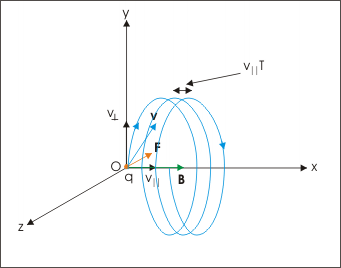
Observation and analysis of properties of high-energy particles in high-energy astrophysics sources play an essential role in exploring the underlying physical processes. Cosmic rays with energies exceeding ∼10 13 eV can be detected indirectly via observation of the cascading shower they produce in the atmosphere. High-energy particles from the Sun or outer space can also be detected directly by satellites in space. The radiative characteristics of high-energy astrophysical sources depend on properties of high-energy particles they produced. The acceleration of energetic particles then becomes a key issue in high-energy space science, high-energy solar physics, high-energy astrophysics, and particle astrophysics. With the development of space astronomy, people started to realize that plasma disturbances in solar flares, Earth’s magnetosphere, and interplanetary space can also produce a large amount of high-energy particles. High-energy astrophysical sources therefore can be readily detected and constitute an important kind of astrophysical objects ubiquitous in the Universe.

Given the high energy of these particles, they can emit efficiently in all electromagnetic wave bands ranging from radio to gamma rays ( Blumenthal and Gould, 1970 Kelner et al., 2006). High-energy particles are the main emitter of varieties of high-energy astrophysical sources. Later with the birth and advances of radio astronomy, X-ray astronomy, γ-ray astronomy, as an important branch of astrophysics, high-energy astrophysics has been playing an increasingly important role in astrophysics research. The origin of high-energy astrophysics can be traced back to the early 20th century when cosmic rays, high energy particles that can ionize gases in the atmosphere, were discovered by Victor Francis Hess (1936 Nobel Laureate in Physics) 1. With advances in high-energy astrophysical observations and in combination with analyses of characteristics of high-energy particle acceleration and radiation, we can better understand the underlying physical processes in dramatically evolving astrophysical environments. These theories have their own assumptions and characteristics and find applications in different astrophysical contexts. According to macroscopic energy conversion mechanisms leading to acceleration of particles, several theories of particle acceleration have been developed: stochastic particle acceleration by turbulent electromagnetic fields, diffusive shock acceleration of particles, and particle acceleration during magnetic re-connections.

Based on the characteristics of interactions between charged particles and electric fields carried by the background plasma, the mechanisms of charged particle acceleration can be divided into several groups: resonant interactions between plasma waves and particles, acceleration by electric fields parallel to magnetic fields, and acceleration caused by drift of the guiding center of particle gyro-motion around magnetic fields in magnetic field in-homogeneity-related curvature and gradient, etc. Charged particles in astrophysical plasmas can be accelerated to very high energies by electric fields. The origin of high-energy particles in the Universe is one of the key issues of high-energy solar physics, space science, astrophysics, and particle astrophysics.



 0 kommentar(er)
0 kommentar(er)
